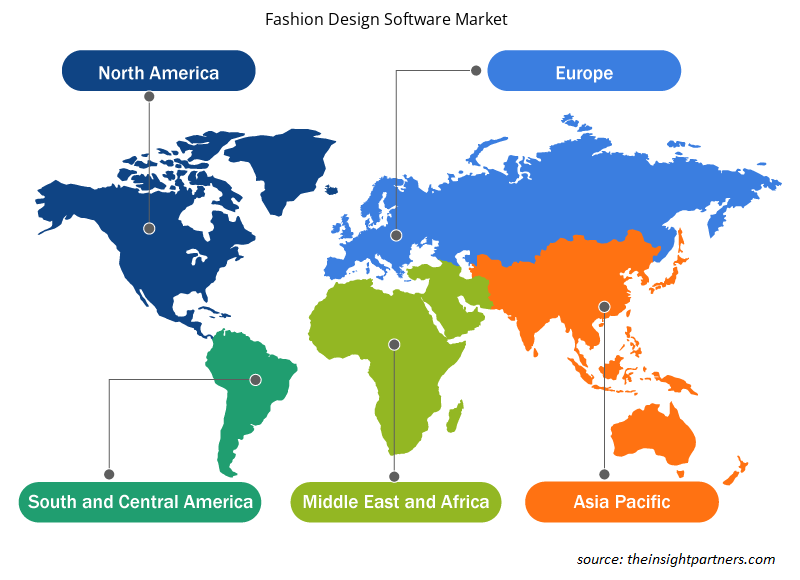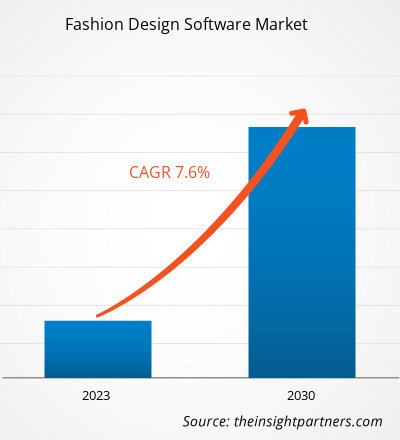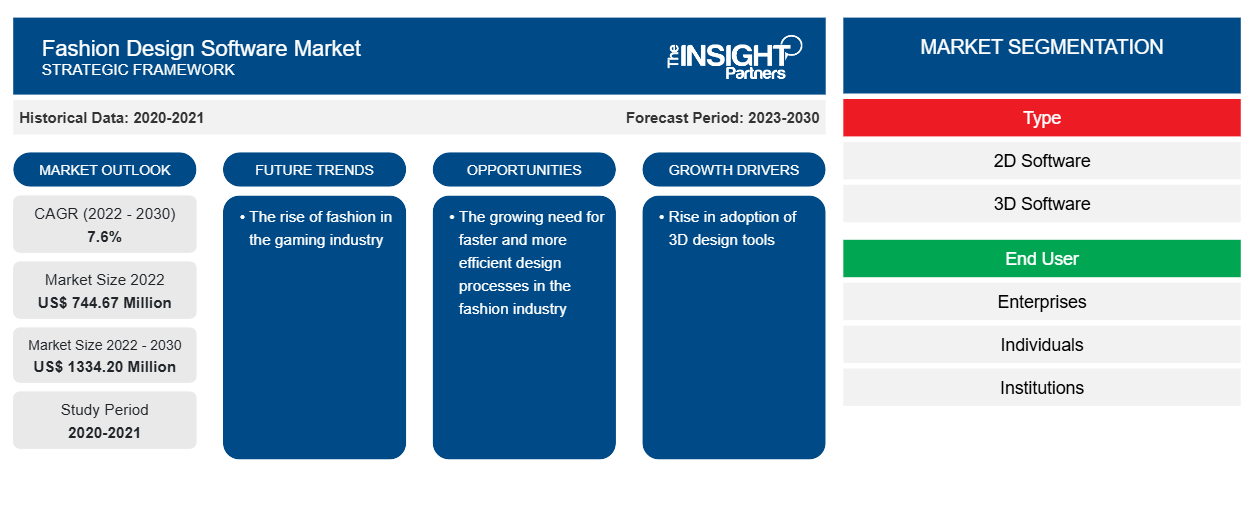时装设计软件市场规模预计将从 2022 年的 7.4467 亿美元增至 2030 年的 13.342 亿美元。预计 2022-2030 年期间市场复合年增长率将达到 7.6%。A. 3D 设计工具的采用率上升以及时尚行业对更快、更高效的设计流程的需求不断增长,可能仍是市场的主要趋势。
时装设计软件市场分析
时装设计软件市场的一个重要驱动因素是按需定制的趋势日益增长。随着时尚意识的增强和对个性的渴望日益增长,消费者正在寻求能够反映其个性和价值观的独特个性化服装。时装设计软件使设计师能够提供定制服务,让买家能够根据自己的特定需求和偏好预览和定制购买的商品。亚马逊时尚 (Amazon Fashion) 和 Louoj 等市场参与者已经推出了虚拟工具和 3D 设计定制软件,以满足对个性化时尚体验的需求。关键驱动因素之一是时尚行业越来越多地采用 3D 设计工具。时装设计师正在转向先进的 CAD 草图工具,如 Adobe Illustrator、Bluecherry、Browzwear 和 C-Design Fashion,以显著增强他们的设计流程。这些工具使设计师能够以数字方式创建和可视化服装,从而减少对物理采样和原型设计的依赖。探索多种设计变化并将其应用于不同材料和图案的能力简化了设计流程,并带来了更多创新和独特的设计。
时装设计软件市场概览
时装设计技术的广泛应用正在改变服装、时尚和奢侈品 (AF&L) 行业设计、开发和营销产品的方式。时装设计软件简化了时装设计开发流程,降低了时间和成本,并减少了对环境的影响。全球数字化的兴起正在推动时装设计软件解决方案的采用。
定制此报告以满足您的需求
您可以免费定制任何报告,包括本报告的部分内容、国家级分析、Excel 数据包,以及为初创企业和大学提供优惠和折扣
- 获取此报告的关键市场趋势。这个免费样品将包括数据分析,从市场趋势到估计和预测。
时装设计软件市场驱动因素和机遇
时尚产业扩张
时装设计软件市场的增长得益于设计工具和新技术的广泛使用,以及行业的扩张努力。2022 年 11 月,CLO Virtual Fashion 扩展到巴黎,增加了其在慕尼黑和马德里的现有办事处。此举促进了法国时装界对时装设计技术的采用,并在全球范围内提供了更好的支持和服务。
发展中国家越来越多地采用软件解决方案
公司正在采用技术先进的解决方案,并寻找与客户建立联系的新方法。为此,他们正在向 3D 迈进。3D 是许多技术进步的核心。3D 技术有助于以图形方式表示几何数据。各种应用程序的出现还使客户能够在购买之前在虚拟形象上试穿服装。这有助于消除虚拟购买时的任何疑虑。时装设计软件还允许创建定制产品,这被称为“按需时尚”。对于像印度这样的国家来说,时尚有着不同的内涵和目的。注重整体教育有望培养出有道德、有意识、能够跳出框框思考的学生和设计师,以借助软件解决未来时代带来的新问题。
时装设计软件市场报告细分分析
有助于得出时装设计软件市场分析的关键部分是类型和最终用户。
- 根据类型,时装设计软件市场分为 2D 软件和 3D 软件。预计 3D 领域的复合年增长率最高。
- 根据最终用户,市场分为企业、个人和机构。预计个人市场复合年增长率最高。
时装设计软件市场份额(按地区)分析
时装设计软件市场报告的地理范围主要分为五个地区:北美、亚太、欧洲、中东和非洲、南美和中美。
北美地区占有相当大的市场份额。该地区拥有许多成功的服装设计和制造公司。该地区的服装业务很容易接受新进入者,而且政府的政策几乎没有任何进入壁垒。例如,2022 年 3 月 7 日,加拿大的 Nextech 签署了多项 3D 模型 AR 电子商务交易。领先的增强现实 (AR) 体验技术和服务提供商 Nextecha 宣布签署了多个行业的多项 3D 模型 AR 电子商务交易,包括 Nextech 的新行业,进一步扩大了公司在电子商务3D 建模领域的影响力。
时装设计软件市场区域洞察
Insight Partners 的分析师已详细解释了预测期内影响时装设计软件市场的区域趋势和因素。本节还讨论了北美、欧洲、亚太地区、中东和非洲以及南美和中美洲的时装设计软件市场细分和地理位置。

- 获取时装设计软件市场的区域特定数据
时装设计软件市场报告范围
| 报告属性 | 细节 |
|---|---|
| 2022 年市场规模 | 7.4467亿美元 |
| 2030 年的市场规模 | 13.342亿美元 |
| 全球复合年增长率(2022 - 2030 年) | 7.6% |
| 史料 | 2020-2021 |
| 预测期 | 2023-2030 |
| 涵盖的领域 | 按类型
|
| 覆盖地区和国家 | 北美
|
| 市场领导者和主要公司简介 |
|
时装设计软件市场参与者密度:了解其对商业动态的影响
时装设计软件市场正在快速增长,这得益于最终用户需求的不断增长,这些需求源于消费者偏好的不断变化、技术进步以及对产品优势的认识不断提高等因素。随着需求的增加,企业正在扩大其产品范围,进行创新以满足消费者的需求,并利用新兴趋势,从而进一步推动市场增长。
市场参与者密度是指在特定市场或行业内运营的企业或公司的分布情况。它表明在给定市场空间中,相对于其规模或总市场价值,有多少竞争对手(市场参与者)存在。
在时装设计软件市场运营的主要公司有:
- Adobe 公司
- Autometrix 公司
- Browzwear 解决方案私人有限公司
- CLO虚拟时尚有限责任公司
- 力克公司
- 哈珀阿灵顿出版有限公司
免责声明:上面列出的公司没有按照任何特定顺序排列。

- 了解时装设计软件市场顶级关键参与者概况
时装设计软件市场新闻和最新发展
时装设计软件市场通过收集一手和二手研究后的定性和定量数据进行评估,其中包括重要的公司出版物、协会数据和数据库。以下列出了时装设计软件市场的一些发展情况:
- 沙特时装委员会宣布与著名的马兰戈尼学院合作推出一项新的数字时装设计计划。为期五个月的计划重点是教设计师如何使用 CLO 3D 数字时装设计软件,该软件可以创建虚拟、逼真的服装和配饰。(来源:Al Arabiya Network,新闻稿,2022 年 1 月)
时装设计软件市场报告覆盖范围和交付成果
“时装设计软件市场规模和预测(2020-2030 年)”报告对以下领域进行了详细的市场分析:
- 时装设计软件市场规模及全球、地区和国家层面所有主要细分市场的预测
- 时装设计软件市场趋势,以及驱动因素、限制因素和关键机遇等市场动态
- 详细的 PEST/波特五力分析和 SWOT 分析
- 时装设计软件市场分析涵盖主要市场趋势、全球和区域框架、主要参与者、法规和最新市场发展
- 行业格局和竞争分析,涵盖市场集中度、热图分析、知名参与者以及时装设计软件市场的最新发展
- 详细的公司简介
- 历史分析(2 年)、基准年、预测(7 年)及复合年增长率
- PEST和SWOT分析
- 市场规模、价值/数量 - 全球、区域、国家
- 行业和竞争格局
- Excel 数据集
近期报告
相关报告
客户评价
购买理由
- 明智的决策
- 了解市场动态
- 竞争分析
- 客户洞察
- 市场预测
- 风险规避
- 战略规划
- 投资论证
- 识别新兴市场
- 优化营销策略
- 提升运营效率
- 顺应监管趋势





















 获取免费样品 - 时装设计软件市场
获取免费样品 - 时装设计软件市场